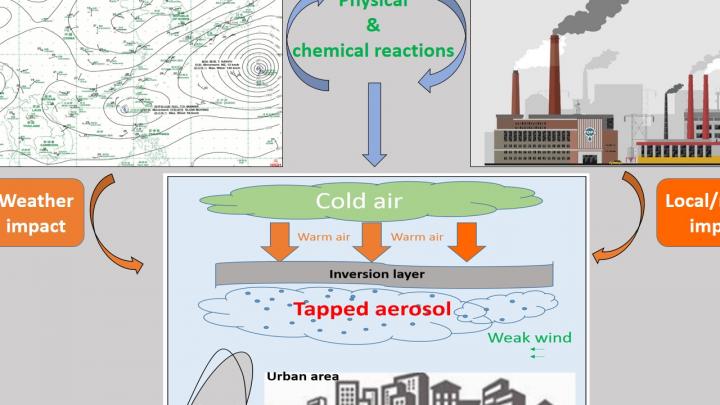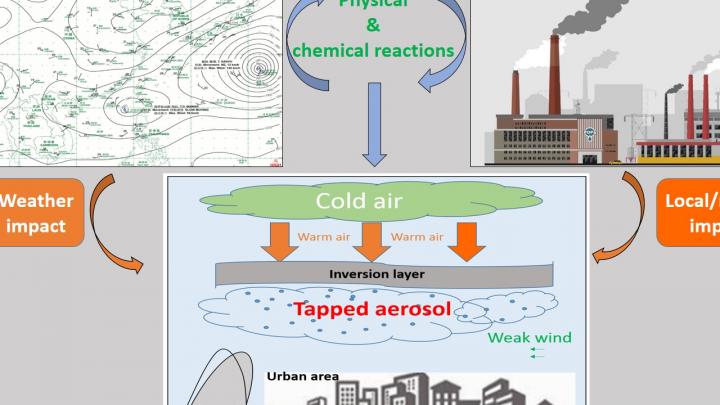
Credit: Nan Wang
Haze pollution is an integrated result of emissions, chemical reactions and regional transport under unfavorable weather conditions. Numerical simulation has the potential to strengthen our knowledge on the underlying mechanisms of haze formation. As a result, policymakers might benefit and efficient control strategies should emerge.
Dr. Nan WANG, from the Institute of Tropical and Marine Meteorology, China Meteorological Administration, and Dr. Zhenhao LING, from Sun Yat-sen University, collected historical data on haze episodes and classified them according to the associated synoptic weather systems. With the aid of numerical simulation, they summarized the characteristics of source region contributions to fine-particle pollution under the most frequent unfavorable weather systems in Guangzhou–a typical city of China's important Pearl River Delta region. They suggested that source region contributions showed significant differences when controlled by different synoptic systems. Their study is published in Advances in Atmospheric Sciences.
"Our statistical results show that SP ['sea high pressure'] and FC ['foreside of a cold front'] are the most frequent unfavorable weather systems in the PRD [Pearl River Delta region]. Usually, Siberian cold high pressure, the predecessor of SP, moves easterly to the sea, forming a weaker but warmer SP. After that, SP extends to southern China and dominates the PRD. A stationary atmosphere can be found and local emissions are the main cause of haze events. However, an FC-affected event means that the convergence of warm and cold air flow occurring to the northwest of the PRD will result in northerly wind prevailing over the PRD. Pollutants from upwind areas become the main factor. Therefore, policymakers can develop more efficient control plans by incorporating weather system analysis when haze events occur."
Dr. Zhenhao LING further explains that meteorological conditions and emissions are the two main factors causing haze pollution, and that chemical transport models may help us to quantify their relative impacts and thus provide scientific guidance for government decisions around emission control measures.
###
Media Contact
Zheng Lin
[email protected]
86-108-299-5053
@aasjournal
http://english.iap.cas.cn/
Original Source
http://159.226.119.58/aas/EN/news/news154.shtml http://dx.doi.org/10.1007/s00376-018-7212-9



